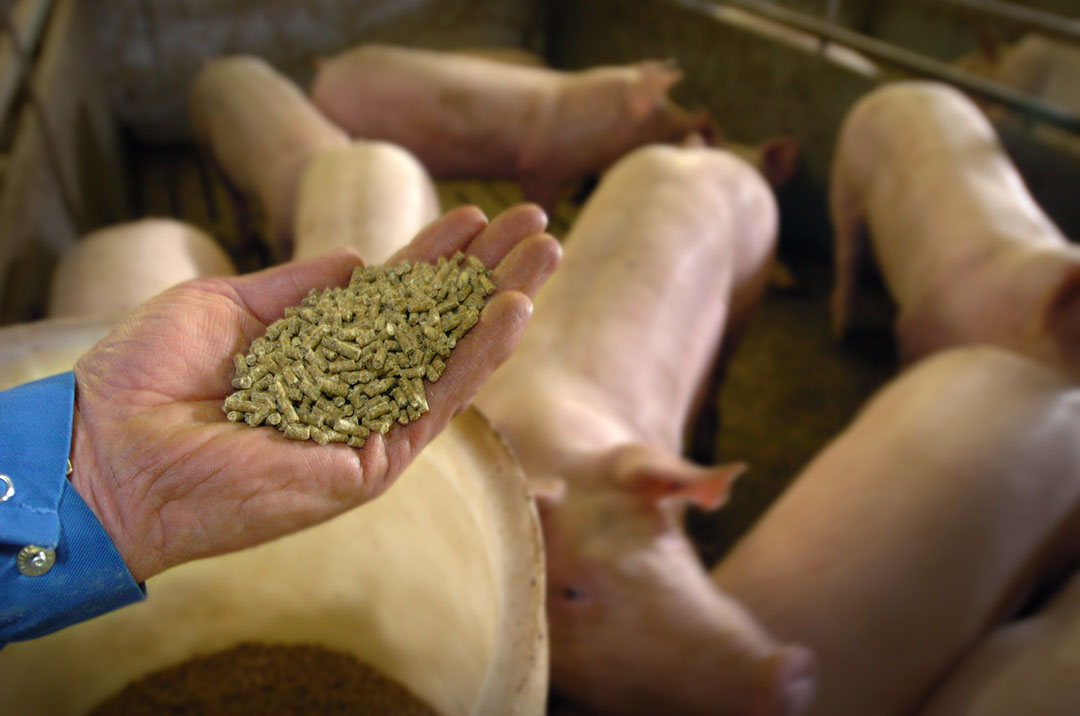ASF can easily be transmitted in water and feed

African Swine Fever virus (ASFv) can be easily transmitted orally through both water as well as feed, according new US research, although doses required for infection are higher in plant-based feed.
That was the conclusion of research by a team of scientists at Kansas State University. The team, led by Dr Megan Niederwerder, assistant professor of diagnostic medicine and pathobiology, researched how ASF virus could spread in feed and feed ingredients. The study was published in Emerging Infectious Diseases, a journal published by the US Centers for Disease Control and Prevention (CDC).
ASF levels needed in liquid are very low
Dr Niederwerder’s team team found that the level of virus required to cause infection in liquid was extremely low, demonstrating the high infectivity of ASF through the oral route. Although greater concentrations of virus were required to cause infection through feed, the high frequency of exposure may make contaminated feed a more significant risk factor. In the abstract of the paper, the team explained used a strain that was isolated in the Caucasian country Georgia in 2007, and that they aimed to determine the minimum and median infectious doses of the strain through oral exposure during natural drinking and feeding behaviours.
Probability of ASF infection in feed
In a news release on the website of KSU, Dr Niederwerder explained, “Working with statistician Trevor Hefley, we were able to model the probability of African Swine Fever infection when pigs consumed a contaminated batch of feed over time. The likelihood of infection increased dramatically after even 10 exposures, or consumption of 1 kg of contaminated feed. Modeling multiple exposures increases the applicability of our experimental data to what would occur at the farm.” The abstract of the scientific article detailed that the minimum infectious dose of ASFv in liquid was 100 50% tissue culture infectious dose (TCID50), compared with 104 TCID50 in feed. The median infectious dose was 101.0 TCID50 for liquid and 106.8 TCID50 for feed.
The reason to study the link between ASF and feed
In the peer-reviewed article, the team wrote in more detail that some outbreaks occurring in Russia and China were sometimes difficult to explain, which made them decide to pursue this particular research: “Molecular characterisation of the more recent ASFv incursions into China and Siberia demonstrate similarity in viral isolates to the Georgia 2007 strain of ASFv. These outbreaks have occurred in herds separated by thousands of km. […] “Also, an ASFv incursion has been reported recently in a large-scale, high-biosecurity farm in Romania. Contaminated water from the Danube River has been implicated in introducing ASF onto the ≈140,000-pig breeding farm. “Contaminated feed as a transmission vehicle for introducing transboundary animal diseases onto high-biosecurity swine operations has been recognised as a major risk factor since the introduction of Porcine Epidemic Diarrhoea virus (PEDv) into the United States in 2013. The lesson learned from PEDv underscores the need to quantitate the risk that feed plays in the introduction of other transboundary animal diseases.”
Drying feed crops on roadways
In the news release, Dr Niederwerder called the study ‘the first to demonstrate that ASF can be easily transmitted through the natural consumption of contaminated feed and liquid’. Hence, the relevance of the finding is difficult to overestimate, as agricultural processing methods for feed ingredients can put them at risk for contamination. The news article refers to the Chinese common practice to dry crops on roadways, which could be contaminated by traffic from trucks containing infected pigs. Processing ingredients on contaminated equipment would be another possible source of transmitting virus particles to feed. Dr Niederwerder explained on the KSU website: “Millions of kg of feed ingredients are imported from countries where African Swine Fever virus is currently circulating.” In this context, she referred to earlier work demonstrating that a wide range of feed ingredients promote survival of the virus after exposure to environmental conditions simulating transboundary shipment.
Next steps in the ASF research
The next step for the team will be to identify ways to reduce or eliminate this risk, including chemical additives, storage time, heat treatments or other steps. Dr Niederwerder said, “African Swine Fever is arguably the most significant threat to worldwide swine production. With no effective vaccine or treatment, preventing introduction of the virus is the primary goal of countries free of the disease. Our hope is that this research will further define possible routes of disease spread and develop mitigation strategies to prevent introduction into the US swine herd.”
The peer-reviewed article was authored by Megan C. Niederwerder, Ana M.M. Stoian, Raymond R.R. Rowland, Steve S. Dritz, Vlad Petrovan, Laura A. Constance, Jordan T. Gebhardt, Matthew Olcha, Cassandra K. Jones, Jason C. Woodworth, Ying Fang, Jia Liang, and Trevor J. Hefley, all attached to Kansas State University, Manhattan, KS, United States.












